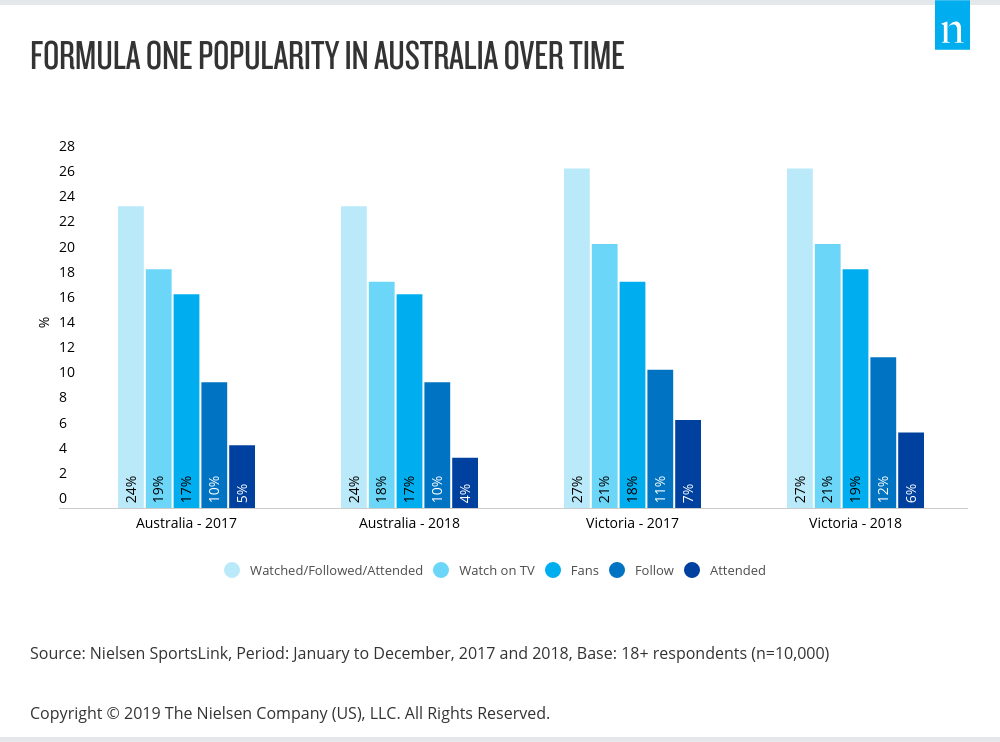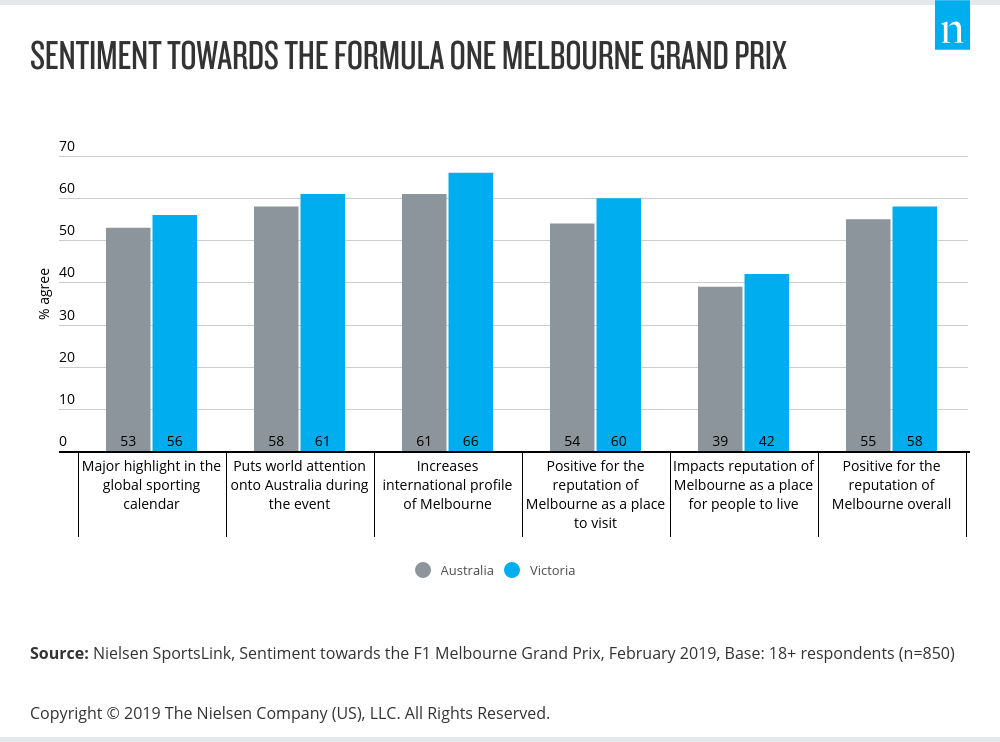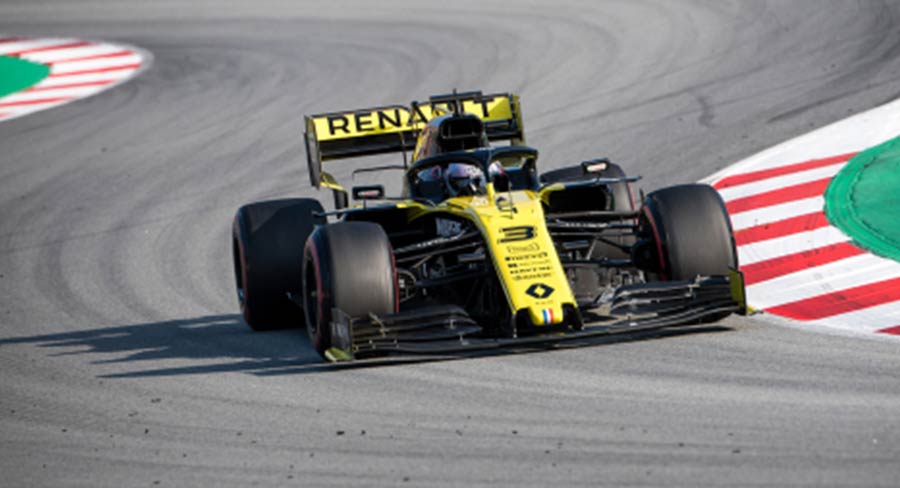The 2019 Formula 1 season commences in Melbourne this weekend, and Nielsen has released a report examining the value of one of Australia’s major sporting events.
Ben Allen is a senior manager at Nielsen Sports and reports on a Nielsen SportsLink survey that shows the overall popularity of Formula 1 has held strong in recent years despite recent changes to competition and racing formats.
Here are the report’s highlights:
The popularity of F1 in Australia
In both 2017 and 2018, 17% of Australians identified themselves as fans of F1, while 24% of Australians attended, watched or followed Formula 1. The pinnacle of fandom is attendance, with approximately 4% of adult Australians claiming they attended Formula 1 in 2018.
The appeal for Victoria
Victoria is the most popular state across all the 2018 metrics for fandom, with 27% of 18+ Victorians having been involved with Formula 1 content; while 19% identify as fans of the sport, and 6% attended a Formula 1 Grand Prix event. When quizzed around the prestige and reputation of the Australian Grand Prix, once again it is Victorians who are most positive about the impact of the event. Sixty percent of adult Victorians agree the Australian Grand Prix positively impacts Melbourne’s reputation as a visitor destination; 66% agree the event increases the city’s international profile; and 61% believe the Grand Prix puts Australia on the global

Where to next for F1 in Australia?
While fans and followers have increased in the state of Victoria, overall claimed attendance for the F1 dropped slightly between 2017 and 2018, making it challenging to convert followers to attendees. The Australian Grand Prix Corporation has addressed this in three major ways:

• Leveraging global marketing assets locally: With the F1 being bought by Liberty Media, local championship organisers now have access to a wider range of marketing assets (like imagery) when promoting the sport. These assets are especially useful when attracting and engaging new audiences on digital channels.
• Food and entertainment: Food and entertainment has been expanded to improve the fan experience through options like the “M-Lane” (a food truck alley initiative) and Heineken Village. This follows in the footsteps of the Australian Open, in creating a festival; more than simply a sporting event.
• Corporate hospitality: As well as increasing the appeal of the sport directly with consumers, the event continues to be hugely successful in attracting corporate hospitality, seeing growth in this area year on year.
As well as raising the appeal for locals, the Australian Grand Prix Corporation looks overseas to attract tourists to Melbourne. According to Nielsen’s sDNA Global Fan Research, the F1 has high interest in markets including Italy, Spain, the U.K and Japan. Approximately half the population is Formula 1 mad in Italy (53% interest) and Spain (49% interest); whereas key tourism markets, the U.K. and Japan, have a 30% interest and 23% interest in the sport respectively.
With Daniel Riccardo making his Renault debut and Lewis Hamilton beginning his bid for a sixth world title, the eyes of the sporting globe will be on Albert Park.
